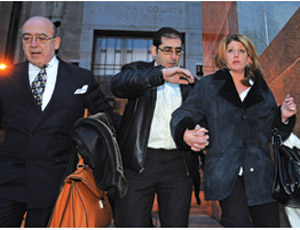Attorneys on July 12 began presenting their case in defense of William Rapetti, the Long Island, N.Y., crane rigger on trial for manslaughter.

Prosecutors allege that Rapetti, who is accused of causing the midtown Manhattan accident that killed six construction workers and one civilian on March 15, 2008, used just four nylon slings—rather than eight, as the manufacturer suggested—to hold the crane’s six-ton collar to its mast during a “jumping,” or extending, operation on the site of a rising condominium. Further, one sling was old and damaged, prosecutors say.
The prosecution is building its case on the “sling theory,” as Rapetti’s attorneys call it, but some witnesses as early as the trial’s first week began poking holes in the allegations that Rapetti was lax and negligent in securing the crane with straps.
Defense attorney Arthur Aidala’s first witness, independent engineer and crane safety expert Leo Y. Lee, a principal with Skyhawk Staging Inc., Brooklyn, testified that the collapse resulted not from the slings but from the buckling of the building’s ninth-floor supporting tie-beams, which had been spot-welded on-site. Lee told the court that the connection “was not fabricated as per the design, and it caused a tear” where the beam was bolted down.
The defense argues the engineer and developer rushed construction to take advantage of the city housing boom in late 2007 and early 2008. The crane’s installation engineer, Peter Stroh, testified earlier that the tie-beams had been spot-welded in order to avoid taking measurements and additional construction.
The prosecution maintains the tie-beams broke when the collar came crashing down after the slings failed. But Aidala said in court that if the collar broke the tie-beams, it would have caused a clean, “guillotine-style” cut. Instead, he argued, the recovered beams had “twisted” off.
Lee said he conducted a rigging experiment using a replica crane in a vacant Brooklyn lot to determine the feasibility of the prosecution’s sling theory. During the experiment, he had a worker intentionally break one of the four slings with a utility knife. Once the sling was severed, he said, the other slings did not break, and the collar fell just 8 in.
Unexpected Testimony
The trial’s second week saw the prosecution rest but not before several of its own witnesses seemed to help the defense by recanting earlier incriminating statements and speaking highly of Rapetti.
Construction worker John Della Porta, who was injured in the collapse, told prosecutors shortly after the accident that he hadn’t seen anyone inspect the slings. However, he testified on July 7 that he saw Rapetti personally inspect all the slings. He blamed the discrepancy on memory loss caused by his injuries.
The prosecution’s case took another hit when the general manager of the crane’s manufacturer, Favelle Favco Group, testified the company did recommend eight slings be used during jumping, but it did not send those recommendations to any individual or company until after the collapse.
In additional testimony, Stroh, the installation engineer, rejected Aidala’s claim the crane was improperly anchored but disagreed Rapetti was to blame for the accident, adding that Rapetti is known as one of the area’s safest riggers.
The defense was expected to call its final witness on July 14.

Post a comment to this article
Report Abusive Comment